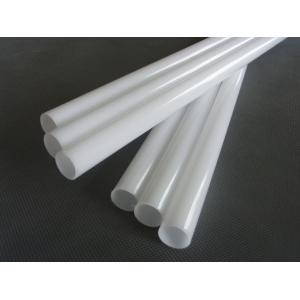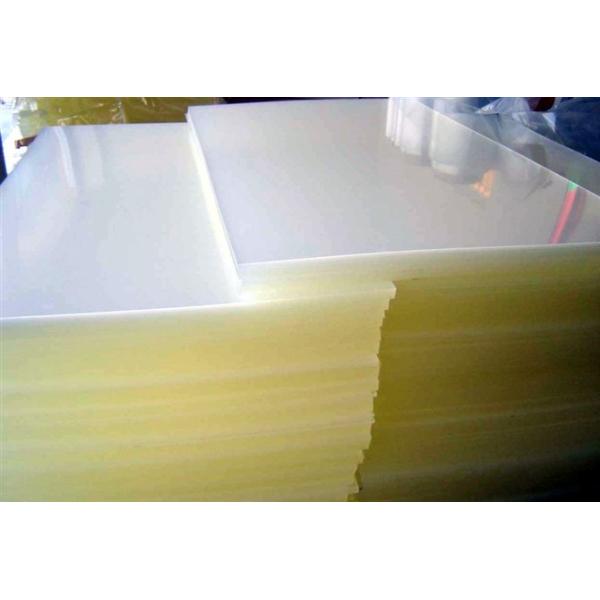Industrial engineering plastics are a group of high-performance polymer materials engineered for demanding applications across various industries. Unlike commodity plastics, these materials offer superior mechanical strength, thermal stability, chemical resistance, and dimensional stability. They are designed to withstand extreme environments, heavy loads, and prolonged use, making them ideal for components in automotive, aerospace, electronics, medical devices, and industrial machinery. Key characteristics include high tensile strength, excellent impact resistance, low moisture absorption, and the ability to maintain properties over a wide temperature range. Their versatility allows for customization through additives and reinforcements to meet specific operational requirements, providing reliable and cost-effective solutions for complex engineering challenges.
Understanding the technical specifications of industrial engineering plastics is crucial for selecting the right material for your application. Below, we detail the primary parameters that define their performance and suitability.
| Material Type | Tensile Strength (MPa) | HDT @ 1.82 MPa (°C) | Impact Strength (Izod, J/m) | Key Applications |
|---|---|---|---|---|
| Polyamide (Nylon) | 70 - 95 | 80 - 190 | 50 - 150 | Gears, bearings, automotive parts |
| Polycarbonate (PC) | 55 - 75 | 125 - 135 | 600 - 850 | Safety glasses, electronic housings |
| Acetal (POM) | 60 - 70 | 110 - 125 | 65 - 130 | Precision parts, conveyor belts |
| Polyetheretherketone (PEEK) | 90 - 100 | 150 - 315 | 80 - 150 | Aerospace, medical implants |
| Polyphenylene Sulfide (PPS) | 65 - 80 | 260 - 270 | 25 - 35 | Electrical components, under-hood auto parts |
| Polyetherimide (PEI) | 85 - 105 | 200 - 210 | 50 - 60 | Medical sterilization trays, aerospace interiors |
Industrial engineering plastics offer several key advantages compared to metals, including significantly lower weight, which reduces inertial loads and energy consumption in moving parts. They exhibit excellent corrosion and chemical resistance, eliminating the need for protective coatings in harsh environments. These plastics provide inherent lubricity in some grades, reducing wear and the need for additional lubricants. They allow for greater design flexibility, enabling complex geometries that are difficult or expensive to achieve with metal machining. Electrical insulation properties make them safe for electronic applications. Additionally, they often have lower tooling costs for high-volume production through injection molding and can dampen vibrations and reduce noise.
Selecting the appropriate industrial engineering plastic requires a systematic evaluation of your application's requirements. Start by identifying the operational temperature range, including peak temperatures and duration of exposure. Assess the mechanical loads, such as continuous stress, impact forces, and cyclic loading. Consider the chemical environment, including exposure to solvents, fuels, acids, or alkalis. Evaluate electrical needs, such as insulation requirements or static dissipation. Dimensional stability and tolerance requirements are critical, as is compliance with industry-specific regulations like FDA, UL, or RoHS. Finally, factor in production volume and cost targets. Consulting with a materials engineer and reviewing technical data sheets for candidate materials is highly recommended to compare properties like HDT, tensile strength, and chemical resistance against your specific use case.
Yes, many industrial engineering plastics can be recycled, but the process is more complex than for commodity plastics like PET or HDPE. Thermoplastic varieties, such as Nylon, PC, and PEEK, can be melted and reprocessed, though properties may degrade after multiple cycles. Thermoset plastics, like some specialized epoxies, cannot be melted and are typically ground for use as filler material. The feasibility depends on the polymer type, contamination levels, and the presence of additives or reinforcements. Many manufacturers have take-back programs or work with specialized recyclers. Advances in chemical recycling are also emerging to break down these high-performance polymers into their monomers for repolymerization, offering a path for higher-quality recycled content.
Lead times for custom-molded industrial plastic parts vary significantly based on complexity, material availability, and production volume. For prototype parts using standard materials, lead times can be as short as 1-3 weeks. For full-scale production runs involving custom tooling, the initial tool fabrication can take 4-12 weeks, followed by a production cycle of 2-6 weeks for the first articles. Factors influencing lead time include the complexity of the mold design, the need for secondary operations like machining or finishing, and the supplier's capacity. It is essential to engage with your molder early in the design process to get an accurate timeline and explore options for expediting, such as using modular mold bases or selecting readily available material grades.
Moisture absorption can significantly impact the performance of hygroscopic engineering plastics like Polyamide (Nylon). As Nylon absorbs moisture from the environment, it acts as a plasticizer, increasing the material's flexibility and impact strength while decreasing its stiffness and tensile strength. This can lead to dimensional changes, causing parts to swell and potentially affecting fit and function in precision assemblies. The electrical insulation properties may also degrade. For applications requiring dimensional stability or consistent mechanical properties, it is crucial to condition the material to the expected service environment's humidity level before machining or use. Alternatively, selecting a low-moisture-absorption plastic like PPS or PEEK may be necessary for critical applications in humid conditions.
Yes, many industrial engineering plastics are suitable for food contact and medical applications, provided they comply with specific regulatory standards. For food contact, materials must meet FDA (U.S. Food and Drug Administration) regulations, often detailed in 21 CFR, ensuring they do not leach harmful substances. Plastics like certain grades of Polycarbonate, PEEK, and UHMW-PE are commonly used. For medical applications, biocompatibility is paramount, assessed through standards like ISO 10993. Materials must withstand sterilization methods such as autoclaving (steam), gamma radiation, or EtO gas without degrading. Plastics like PEEK, PEI (ULTEM), and medical-grade Polycarbonate are frequently used for surgical instruments, implants, and device housings due to their stability, purity, and compliance with stringent regulatory requirements.
The primary difference lies in their molecular structure and how it influences their properties. Amorphous plastics, such as Polycarbonate (PC) and Polysulfone (PSU), have a random, entangled molecular structure. This results in excellent dimensional stability, high clarity, and good impact strength, but they tend to have a more gradual softening point and are susceptible to stress cracking by certain chemicals. Semi-crystalline plastics, like Polyamide (Nylon), PEEK, and PPS, have regions of orderly, packed molecules (crystallites) within an amorphous matrix. This structure provides higher chemical resistance, better fatigue resistance, and improved wear properties. However, they are typically opaque, undergo a distinct melting point, and can exhibit higher mold shrinkage. The choice depends on whether chemical resistance and wear (semi-crystalline) or dimensional stability and clarity (amorphous) are more critical for the application.


